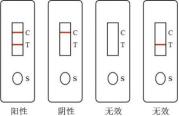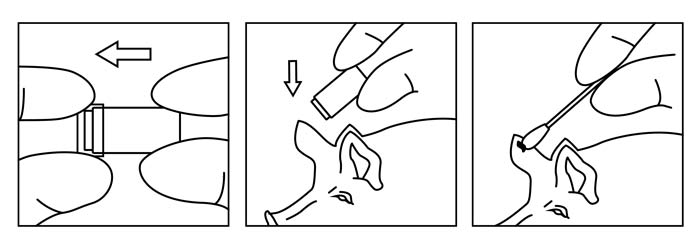

This product is used for the qualitative detection of brucella antibodies in cattle and sheep blood in vitro. Bovine brucellosis, also known as infectious abortion, is caused by Brucella (Brucella) a zoonotic contact infectious disease. The susceptibility of cattle and sheep to this disease increases as the sexual organs mature. Cows are usually asymptomatic except for abortion, and a brucella rapid test kit or brucella test kit can be used to detect brucella test antibodies.
Specification: 20 pieces/box
Test sample: whole blood/serum
The Brucella Virus Antibody Rapid Test Kit is a fast and convenient way to detect the presence of Brucella antibodies in the blood. This veterinary test kit is ideal for rapid screening of individuals suspected to have been exposed to the virus. The procedure is simple and involves just a few steps.
First, a small drop of blood is taken from the patient and placed on a test strip. The strip is then inserted into the brucella test kit. After the test is completed, a colored line will appear on the strip if Brucella antibodies are present. A negative result is indicated by no line, while a positive result is indicated by two lines.
The Brucella Virus Antibody Rapid Test Kit is highly accurate and easy to use. It is a cost-effective and time-saving method for screening for Brucella antibodies. It is recommended for use in laboratories and healthcare settings. The kit is ideal for use in large-scale screening programs.


Brucella virus antibody rapid test kits are a reliable and easy-to-use tool for detecting antibodies to the Brucella virus. This test is performed by taking a small sample of blood, which is then placed into a test cassette containing the test reagents. The test results are then read by a visual inspection. A positive result indicates the presence of antibodies to the Brucella virus, while a negative result indicates the absence of antibodies.
Place the brucella test kit on a horizontal table and add two drops of whole blood or serum to sample (S) well of the brucella rapid test kit using a pipette;
Slowly add one drop of diluent to the sample well (serum samples do not need to drop diluent, tighten the diluent bottle after use and reserve it for next use);
Results will be interpreted within 5-15 minutes, and invalid results will be interpreted over 15 minutes.
Interpreting the results of a Brucella virus antibody rapid test kit is an important step in determining whether further testing is necessary. The Brucella virus is a bacterial pathogen that can cause serious illness in humans, so accurate and timely diagnosis is essential. The Brucella rapid test kit is a quick and easy way to detect the presence of antibodies in a patient's blood sample. The results of the test can provide important information that will help guide further diagnostic and treatment decisions.
When interpreting the results of the Brucella rapid test kit, it is important to understand the different categories of results that may be reported. A positive result indicates the presence of Brucella-specific antibodies in the patient's blood sample. A negative result means no Brucella-specific antibodies were detected. A weak positive result indicates a low level of antibodies, which may suggest a recent infection or recent exposure to the virus.
It is also important to consider the context of the test results. For example, if the patient has recently been in a region where Brucella is known to be present, the test result should be interpreted with caution. Similarly, if the patient has previously been diagnosed with a Brucella infection, a positive result may indicate an ongoing infection or a relapse.
In addition, it is important to consider the reliability of the test kit itself. If the test kit was not stored or handled properly, or if it has been used past the expiration date, the results may be unreliable.
When interpreting the results of a Brucella virus antibody rapid test kit, it is important to consider the context of the test, the reliability of the kit, and the patient's medical history. The results of the test can provide important information that will help guide further diagnostic and treatment decisions.



